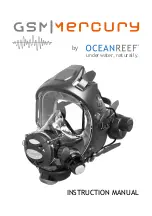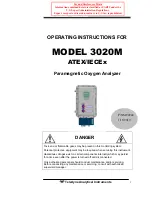
<8. TROUBLESHOOTING>
8-1
IM 12E04A02-02E
9th Edition : Mar. 16, 2018-00
8. TROUBLESHOOTING
If a failure occurs in the converter or the detector, the self-diagnostic function detectors the failure
and lights up FAIL lamp to notify of the occurrence of the failure. When the FAIL lamp is lit, first
check the error code and then do the checks for each item described in Section 8.1.
Incorrect indications that cannot be checked by the self-diagnostic function may also be
considered. If an indication failure occurs but the FAIL lamp is not lit, do the checks referring
to each item in Section 8.2. For checking, a multimeter, or the like, that can measure DC/AC
voltage, DC currents, and resistances, will be needed.
As a result, if component replacement or repair is required, or if the location of the failure cannot
be determined, contact Yokogawa.
8.1 Events in Which FAIL Lamp Is Lit
If the FAIL lamp is lit during measurement, check the error code in the following procedure and
carry out making checks corresponding to each number.
<Error Code Confirmation Procedure>
(1) Select FUNCTION “A” in the <MAINT> mode and press the [ENT] key.
(2) A display appears, such as “Err11”. Check the points according to the listed procedure for
each error number.
Note 1: When a failure occurs, the FAIL contact operates. If the FAIL status presents an inconvenience, perform an “error reset
operation” (FUNCTION “B” in the <MAINT.> mode) to reset the failure. If resetting, be sure to first check the details by the “error
code checking operation” before resetting.
(1) Err11 (turbidity overrange)
Carry out checking in the following order.
Operation and checking procedure
Failure Mode and Corrective Action
1
Measure the DC voltage across the converter
connection terminals [S1(+) and AG(-)] to make sure
of it, and confirm that it is smaller than -2.45 V or
larger than +0.5 V.
2
Check whether or not the turbidity of measuring
water exceeds the measurable range (2200 mg/L
(deg.)).
“Err11” is detected when the turbidity of the measuring
water increases and the detector signal exceeds -2.45 V
.
3 Measure the DC voltage across the converter
connection terminals [V+(+) and AG(-)] and confirm
that it is +5 ±0.5 V.
If the measured voltage is out of the range, a failure of
the +5 V power circuit on the converter analog board
is assumed.
=> Request inspection and/or repair of the analog
board.
4
Measure the DC voltage across the converter
connection terminals [V-(+) and AG(-)] and confirm
that it is -5 ±0.5 V.
If the measured voltage is out of the range, a failure of
the -5 V power circuit on the converter analog board is
assumed.
=> Request inspection and/or repair of the analog
board.
5 Introduce the external light onto the scattered
light-receiving element by opening the detector and
check whether the DC voltage across the converter
connection terminals [S1(+) and AG(-)] changes.
If the measured voltage does not change, a failure of
the detector preamplifier is assumed.
=> Request inspection and/or repair of the
measuring preamplifier.
Summary of Contents for EXA TB TB400G
Page 65: ...Blank Page ...
Page 87: ...Blank Page ...
Page 125: ...Blank Page ...
Page 143: ...Blank Page ...
Page 149: ...Blank Page ...
Page 151: ...Blank Page ...
Page 157: ...Blank Page ...














































